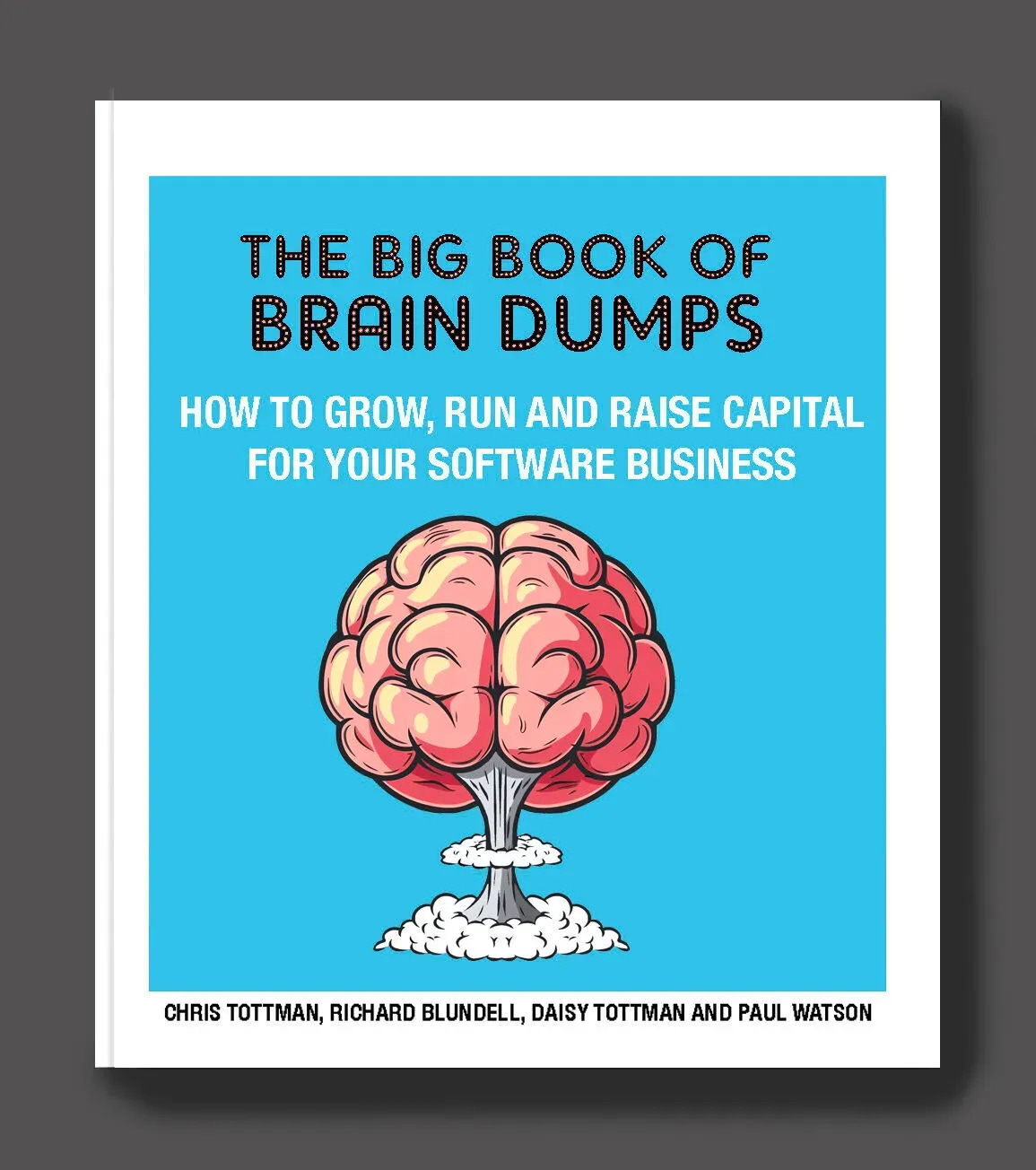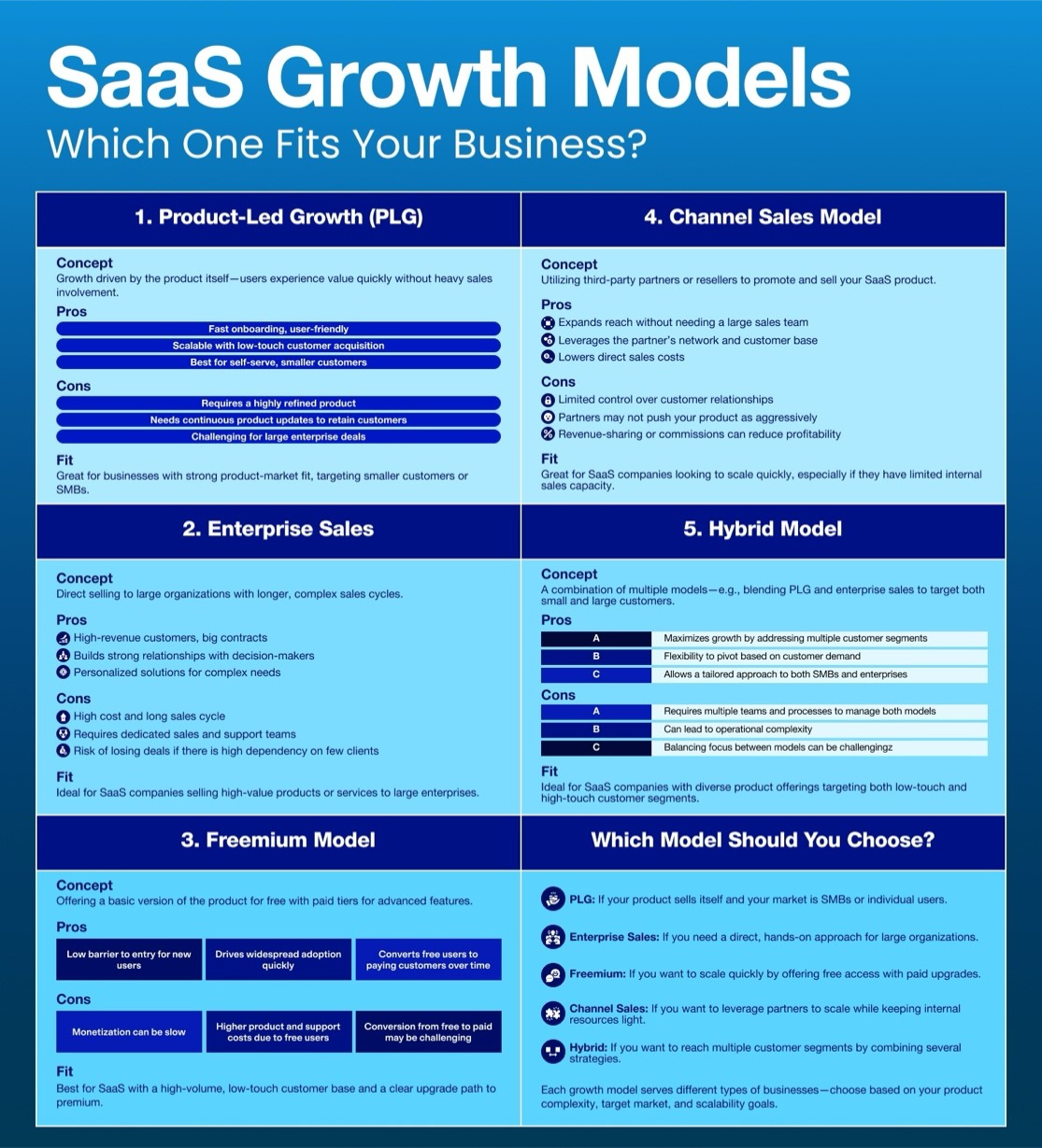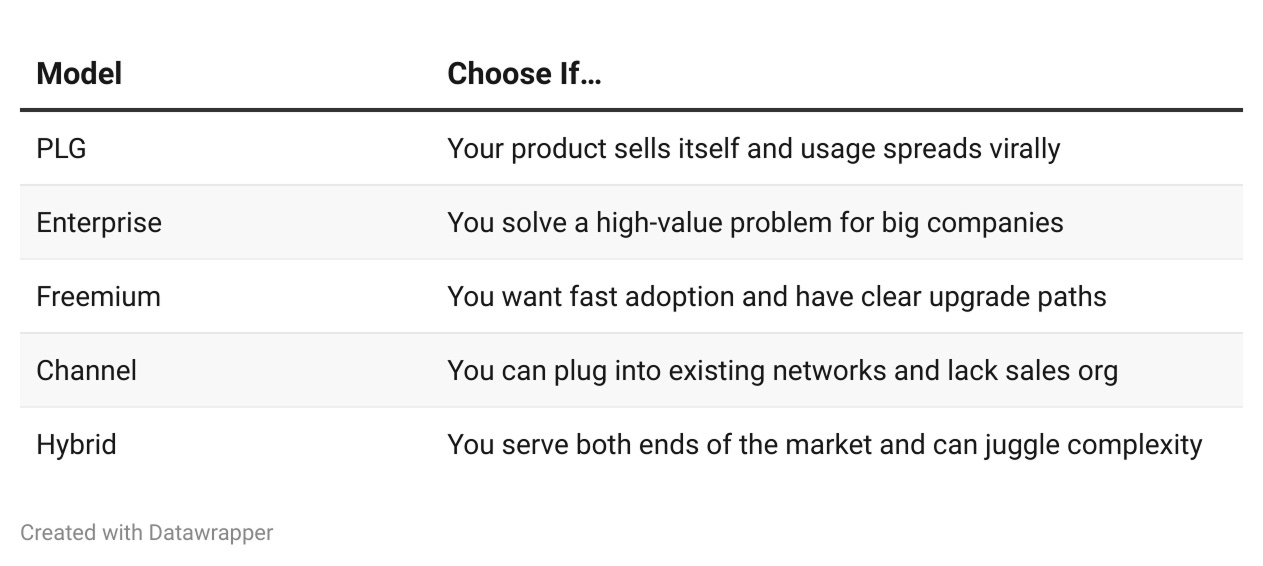🫣 You're Probably Using the Wrong Growth Strategy—Here's How to Tell
The best product doesn't always win. The best distribution does. Most founders learn this after it's too late. Use this framework to leapfrog the rest.
👋 Hey, Chris here! Welcome to BrainDumps—a weekly series from The Founders Corner. If you’ve been reading along, you know this series is a preview of a bigger project. Well, it’s finally here: The Big Book of BrainDumps is out now!
It isn’t a theory book—it’s the founder’s field manual. Inside, you’ll find 70 powerful frameworks distilled from 30+ years scaling software companies to hundreds of millions in ARR, 20+ years investing in 500+ B2B tech startups, and over $1B of shareholder value created. From raising capital to hiring your first VP of Sales, this book turns scars and successes into practical playbooks you’ll return to again and again. I expect most copies will become well-worn, scribbled on, and dog-eared—because it works.
Table of Contents
Picking the Right Growth Model Isn’t Optional—It’s Strategic
🧭 1. Product-Led Growth (PLG)
🤝 2. Enterprise Sales
🆓 3. Freemium
🔗 4. Channel Sales
⚖️ 5. Hybrid Model
So, Which Model Should You Choose?
My Final Advice as an Investor (and Ex-Founder)
Picking the Right Growth Model Isn’t Optional—It’s Strategic
There’s a moment in nearly every founder’s journey where the excitement of building gives way to a deeper, more difficult question:
“Now that I’ve built it… how the hell do I sell it?”
And here’s the thing no one tells you early enough:
Your product is only half the battle. The other half is choosing the right go-to-market model.
Because even the best product will fail if you push it through the wrong growth engine.
At Notion, I’ve seen every flavor—product-led flywheels that go viral, enterprise horses that win with slow, strategic precision, freemium bombs that take off (and crash), and channel partnerships that unlock international scale overnight.
But the most successful founders?
They choose their model early.
They align their teams around it.
And they revisit it ruthlessly as they grow.
So here’s a deep dive on the five core SaaS growth models—and how to know which one fits your business best.
🧭 1. Product-Led Growth (PLG)
The product sells itself.
This model has exploded over the last decade. Think Notion. Think Figma. Think Calendly.
You build something so intuitive, so valuable, that users invite others, share it organically, and onboard themselves.
It’s self-serve by design—and it works.
When I first met the founders of one of our portfolio companies who were going down the PLG route, I asked how they were going to scale. Their answer?
“We don’t need sales. We need product usage.”
It sounded bold, but they were right.
We watched their daily active users climb from 200 to 20,000 in under a year—without a sales team.
The key? Frictionless value. The product made sense in 30 seconds. You didn’t need a pitch. Just a link.
✅ Pros:
Low CAC
Viral potential
High scalability
❌ Cons:
Requires outstanding UX
Harder to monetize without high usage volume
🎯 Best for:
Founders with strong PMF, a simple onboarding path, and a high-volume, low-touch customer base.
🤝 2. Enterprise Sales
Go slow to go big.
This is the heavyweight model. High contract values. Long sales cycles. Strategic relationships.
It’s not glamorous at the start. There’s a ton of meetings, procurement headaches, and rejection.
But if you’re solving a high-stakes problem for large organisations, this is the game.
I once coached a founder who was terrified of selling into enterprise. He said:
“I’m a product guy,”
Six months later, after losing three deals by email, he flew to a client’s HQ, presented in person—and closed a six-figure deal that funded his next 18 months.
✅ Pros:
High revenue per customer
Deep integrations, stickier users
❌ Cons:
Long cycles
Requires sales ops, legal, and onboarding muscle
🎯 Best for:
Complex products, consultative sales, and markets with fewer, bigger customers.
🆓 3. Freemium
Lower the barrier. Win at scale.
The freemium model is seductive. You offer value up front—no commitment, no cost—and hope that usage creates demand for paid upgrades.
Done well, it can build massive top-of-funnel momentum.
Think Dropbox. Think Zoom. Think Mailchimp.
But here’s the danger: if users love your free tier and never upgrade, you’re running a charity.
I’ve seen founders rack up 50,000 users—and only convert 0.3%.
It’s a volume game, and you need serious discipline on what’s free and what’s gated.
✅ Pros:
Explosive adoption
Low entry friction
❌ Cons:
Monetization can lag
Support costs from free users
🎯 Best for:
Tools with clear upgrade paths and high LTV on paid tiers.
🔗 4. Channel Sales
Leverage someone else’s reach.
Channel sales means you don’t sell it—your partners do.
This could be resellers, VARs, consultants, or ecosystem partners. You build the product; they own the relationship.
I’ve watched software companies break into new geographies, sectors, and customer profiles because they tapped the right channel partner.
But there’s a catch: you’re not in control.
You don’t own the pipeline. Your partner does.
So it demands careful relationship management, clear incentives, and aligned goals.
✅ Pros:
Fast expansion
Lean internal teams
❌ Cons:
Lower margins
Less customer visibility
🎯 Best for:
Products that plug into existing ecosystems or target markets where direct sales are difficult.
⚖️ 5. Hybrid Model
The best of both worlds—if you can balance it.
This one’s tricky, but powerful. You combine models:
PLG for SMBs
Enterprise sales for big accounts
Channels for expansion
Think HubSpot. Think Atlassian.
I once worked with a team that started PLG, added a sales team for bigger deals, then brought on channel partners to reach verticals like finance and healthcare. It wasn’t clean—but it worked.
The key is orchestration. You need clear lanes, dedicated resources, and a leadership team that can juggle priorities.
✅ Pros:
Maximise total addressable market
Flexible strategy
❌ Cons:
Operational complexity
Risk of diluted focus
🎯 Best for:
Founders with multi-segment audiences and strong operations leadership.
So, Which Model Should You Choose?
Let me simplify it:
If you’re early, pick one and go deep.
If you’re growing, layer carefully.
But don’t make the rookie mistake of trying to “do a bit of everything” too soon.
It splits your focus. Confuses your team. And dilutes your execution.
My Final Advice as an Investor (and Ex-Founder)
The biggest growth model mistakes I see?
Founders choosing based on trends instead of fit.
Just because PLG worked for Figma doesn’t mean it’ll work for a B2B compliance tool.
Just because someone raised a Series A on freemium doesn’t mean your market will convert.
You’ve got to ask:
How complex is your product?
Who makes the buying decision?
What’s the average deal size?
How fast do you need to scale?
Do you have the team to support a given model?
Get brutally honest about those answers—and choose accordingly.
Because your growth model isn’t just a strategy.
It’s the foundation for how you build, hire, market, and fund.
Choose it well.
—Chris Tottman





This is an excellent breakdown of the ways to balance GTM for market, product, and target outcomes.
saved for reading, I like the topic